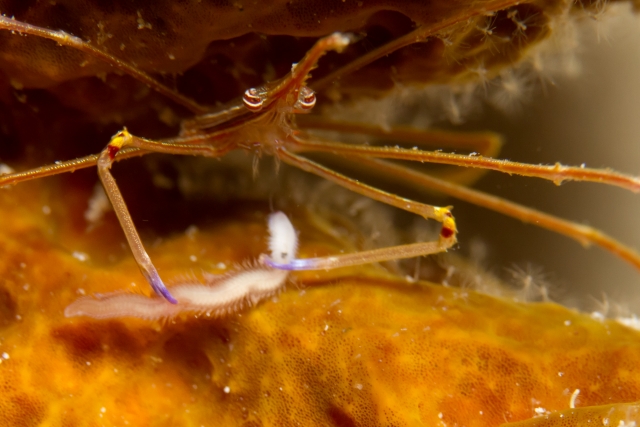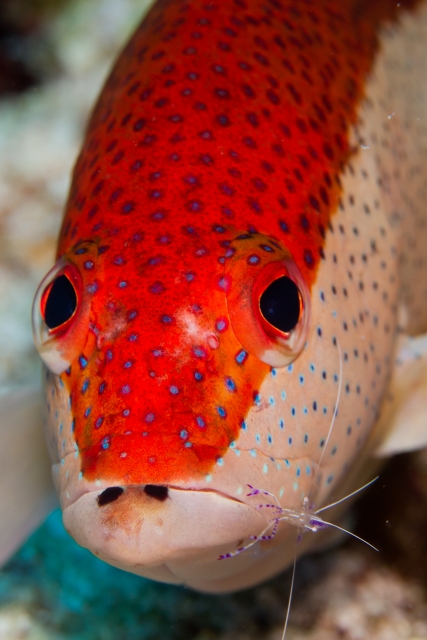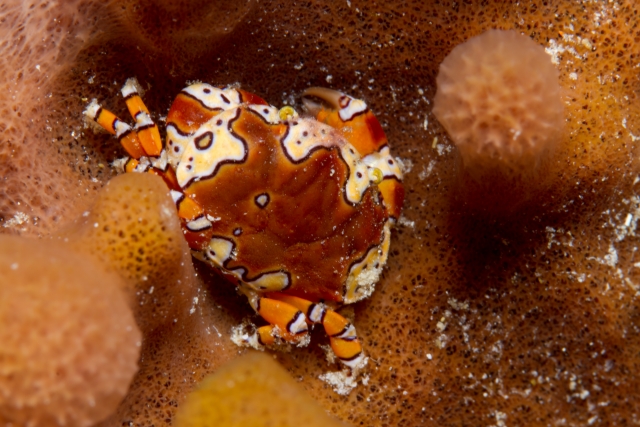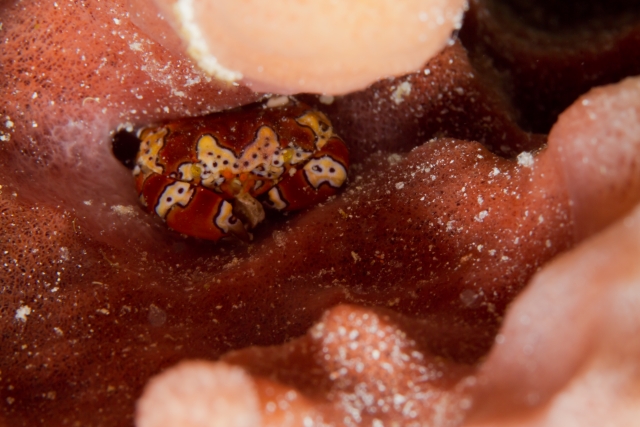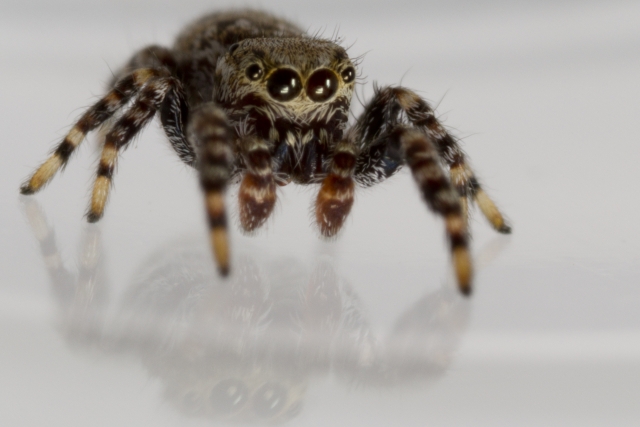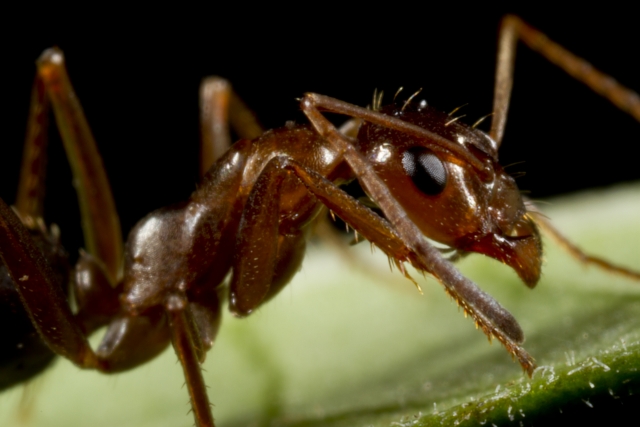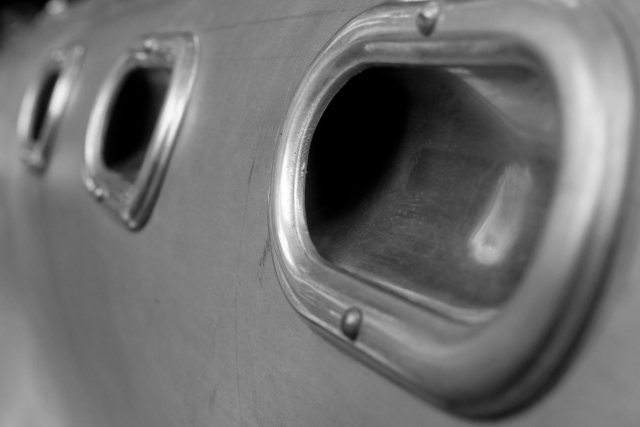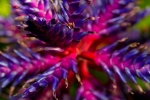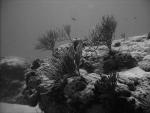macro
Turks and Caicos Explorer: Arrow Crab Dinner
ktuli — Tue, 11/20/2012 - 19:40
Ok - a few posts ago, I mentioned that I would share a photo of an arrow crab that caught a blood worm just as I was taking photos of it.
The blood worms are harmless worms that swim in the water. Usually they are less than an inch long, though we did see some that were several feet long. During night dives, they are attracted to the lights, and honestly can get downright annoying. When you get too many in front of your dive lights, there are a couple things you can do. First, you can just turn off your dive light and they'll disperse - if a friend is nearby, they'll all swarm to their light while you swim away laughing. Second, you can feed them to brain corals... simply move your light close to a brain coral and the blood worms haplessly swim into the coral and are trapped and eaten. Or, if you're really lucky, you can feed other reef critters...
Technical Data: Canon EOS 7D, Canon EF 100mm f/2.8L Macro IS USM, 1/120th sec at f/8. Image Stabilization on. ISO 640. Ikelite Housing and Port with dual Ikelite 161 Strobes in TTL Mode. Raw conversion and cropped in Photoshop CS5. (mouseover for original uncropped version).
I seem to have taken a break from processing photos. I have seven dives left to process, so hopefully with the added time off from the holiday, I can possible get through the rest of them and get on a more regular posting schedule.
Stay tuned.
- Bill
Turks and Caicos Explorer: More Reef Dentistry
ktuli — Wed, 11/14/2012 - 20:59
Sorry - been a little lax with posting, so I'll try and get back to sharing photos from the trip more regularly. I still have about seven more dives to process the photos from.
Last year, I shared a shot of a Pederson's Cleaner Shrimp on a Spotted Moray Eel. Well, this year, I caught one on a Coney.
Technical Data: Canon EOS 7D, Canon EF 100mm f/2.8L Macro IS USM, 1/200th sec at f/11. Image Stabilization on. ISO 160. Ikelite Housing and Port with Ikelite 161 Strobe in TTL Mode. Raw conversion and cropped in Photoshop CS5.
- Bill
Turks and Caicos Explorer: Fluorescing Corals (part 2)
ktuli — Thu, 11/01/2012 - 20:16
OK - this stuff is too cool, so here's another blast of fluorescing coral photos (today we're doing all vertically oriented photos).
One extra cool thing to note in this batch... the top photos on either side show a closed coral and the same coral with its feeding polyp tentacles opened. Pretty awesome, no?
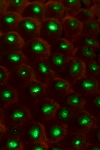 |
 |
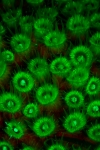 |
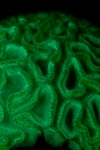 |
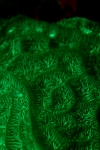 |
|
 |
 |
|
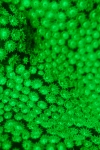 |
 |
Technical Data: Canon EOS 7D, Canon EF 100mm f/2.8L Macro IS USM with Yellow 12 Filter, 1/120th sec at f/8. Image Stabilization on. ISO 640. Ikelite Housing and Port with dual Ikelite 161 Strobes in TTL Mode both with NightSea BE3 Excitation Filters. Raw conversion in Photoshop CS5.
The second photo on both sides appear to be two different types of brain coral. One of the fun things we like to do during night dives is feed blood worms to the brain corals - I don't have any photos of that, but I do have a shot of an arrow crab catching a blood worm that I will share soon!
Stay tuned!
- Bill
Turks and Caicos Explorer: Fluorescing Corals (part 1)
ktuli — Wed, 10/31/2012 - 18:49
What up, fishes!?!
One of the things that I wanted to do on this dive trip was to check out the fluorescence on the reefs. You may have seen some of my land-based results with jumping spiders, but I still was blown away by the results I got.
The equipment I bought was made by NightSea and includes an excitation filter that goes on your light source (flash/strobe) and a yellow lens filter that acts to eliminate the color of the excited light. Basically, the excitation filters produce a bluish light that is the correct wavelength to induce the most common fluorescence responses - the yellow filter then removes that bluish light and returns things back to normal. We also had a special flashlight that had the blue excitation light, plus some yellow filters that went over the front of our masks so we could see the fluorescence effect that way too.
The results were stunning...
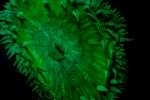 |
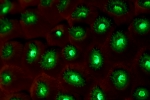 |
 |
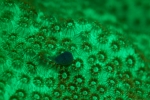 |
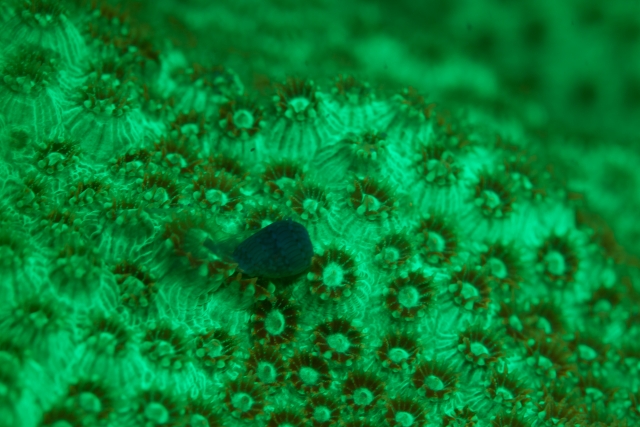 |
|||
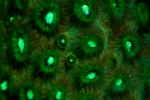 |
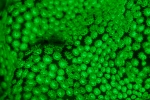 |
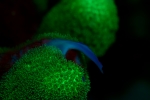 |
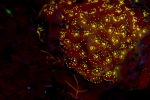 |
Not everything fluoresced on the reefs, so as we shined our lights along the corals, some would glow incredibly bright while others were just black and did nothing. I searched around for small critters like crabs and shrimp, but considering there were always hungry sharks or large horse-eyed jacks feeding during out night dives, it wasn't always the easiest thing to be looking for little stuff while not being able to see anything that wasn't fluorescing.
Maybe next time (and hopefully next time is soon!).
- Bill
Turks and Caicos Explorer: Gaudy Clown Crab
ktuli — Sun, 10/28/2012 - 20:06
I normally don't like to do this when processing photos, but I've decided to bounce around and pick and choose the order I process the photos from our last dive trip. One reason for this is that I was really struggling early in the week (more on that later), and so to get to the better photos, I have to jump ahead.
Another reason is that I am much more excited to share some of the subjects later in the week. Today's subject is just that.
This is a Gaudy Clown Crab (Platypodiella spectabilis). According to my ID book, these are listed as "occasional", but this is the first one I have ever seen, and when the captain of our boat asked me if I could find it again because he had never managed to get a good photo of one before (not sure if he'd seen one before or not), I felt really pleased with myself for having found it. Keep in mind, they only get to a maximum of 3/4 inch in size...
Technical Data: Canon EOS 7D, Canon EF 100mm f/2.8L Macro IS USM, 1/120th sec at f/16. Image Stabilization on. ISO 100. Ikelite Housing and Port with Ikelite 161 Strobe in TTL Mode. Raw conversion in Photoshop CS5.
So while I felt finding one of these crabs was an accomplishment, I took the challenge to find another on the following dive. I spent the entire dive searching barrel sponge after barrel sponge. And while I'm not 100% sure if this is the same crab or second one (I've tried matching the patterns, and can't come to a decision on it), I am very impressed that I was able to locate one of these crabs for the captain. Unfortunately, as you can see - it wasn't in as good of a location to photograph, so he'll likely have to keep looking... :(
Technical Data: Canon EOS 7D, Canon EF 100mm f/2.8L Macro IS USM, 1/120th sec at f/16. Image Stabilization on. ISO 100. Ikelite Housing and Port with Ikelite 161 Strobe in TTL Mode. Raw conversion in Photoshop CS5.
This is why I love diving... finding these beautiful little creatures that most people have never seen before.... and then doing it again.
- Bill
Reflecting on my Spider Photos
ktuli — Wed, 10/03/2012 - 14:29
I know I've been a bit lax in posting recently. I have been trying to get the gallery system upgraded to the latest version and that has been proving less than simple. On top of that, I've had a backlog of photos to process - today's is one of them.
I recently noticed that at the right angle, the containers I use to catch these jumping spiders in produce a nice soft reflection of the spider. There are some distracting elements (note the while line through the reflection). This shot is a fairly aggressive crop to highlight the spider and reflection while eliminating those distracting elements as much as possible...
Technical Data: Canon EOS 7D, Canon MP-E 65mm f/2.8 1-5x Macro, 1/250 sec at f/13. Canon Macro Twin Lite MT-24EX in ETTL mode. ISO 100. RAW processing and cropped in Adobe Camera Raw.
- Bill
Trashline Spider
ktuli — Wed, 09/26/2012 - 18:27
As the weather gets colder, it will be harder and harder to find spiders... but you know I'll keep looking. We've had one of these interesting spiders living on our shed all summer, so when I saw this one with the nice background, I figured I needed to get a shot of it.
These spiders are called trashline for obvious reasons, and it is used as a form of camouflage - to great effect.
Technical Data: Canon EOS 7D, Canon MP-E 65mm f/2.8 1-5x Macro, 1/25 sec at f/14. Canon Macro Twin Lite MT-24EX in ETTL mode. ISO 1250. RAW processing in Adobe Camera Raw.
The species is Cyclosa conica which is in reference to its cone shaped abdomen, and it is one of the things that actually helps one to spot this spider on its web. As it hides among its 'trash' (which is the remains of its previous meals), it blends in almost perfectly.
Such a cool spider...
- Bill
Super Macro Ant
ktuli — Mon, 09/17/2012 - 20:33
Ok - a brief break from the Yosemite photos (mainly because I need to process more of them) to share a super macro shot I did of an ant during this past week's MeetUp Macro Shootout that I hosted out at South Park...
Technical Data: Canon EOS 7D, Canon MP-E 65mm f/2.8 1-5x Macro, 1/160 sec at f/16. Canon Macro Twin Lite MT-24EX in ETTL mode. ISO 100. RAW processing in Adobe Camera Raw.
Not necessarily a view you get of an ant every day. I normally can't get shots like this because ants rarely hold still, but it was fairly early and somewhat chilly that morning, so this ant was quite sluggish which allowed me to get several shots of it.
- Bill
Jumping Spider Super Assortment
ktuli — Thu, 08/09/2012 - 20:45
Too many posts without a spider... so here's a whole assortment to get us caught up... enjoy!
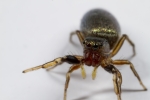 |
 |
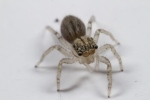 |
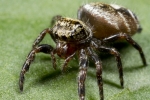 |
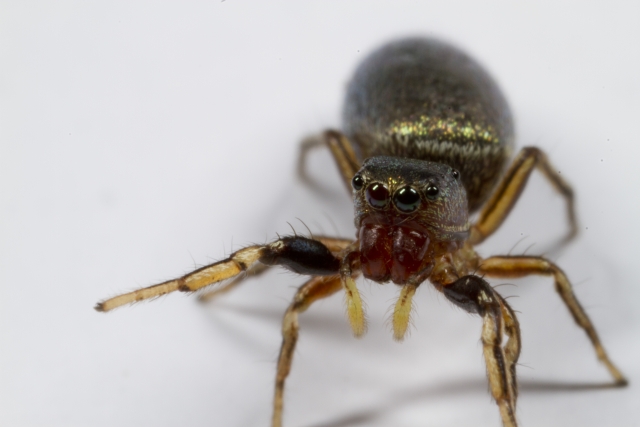 |
|||
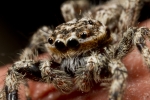 |
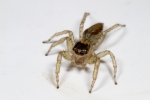 |
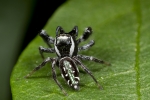 |
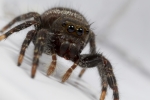 |
There. Now I feel better.
- Bill
PVGP 2012 (part 2)
ktuli — Sun, 08/05/2012 - 20:35
Just a quick post today. As I said before, I didn't come back with too many great shots from the Grand Prix this year. I took this abstract of some air in-take openings on the side of what I think was an Allard (but I'm not sure). I threw a quick B&W conversion at it to remove the distracting colors in the reflections (mouse-over for original).
Technical Data: Technical Data: Canon EOS 7D, Tokina AT-X M35 Pro DX AF 35mm f/2.8 Macro 1:1, 1/100 sec at f/8. ISO 400. RAW processing in Adobe Camera Raw.
I'm still not quite sure what exactly draws me to this image, but I like it. It might be able to be improved upon, so perhaps I'll have to look at it again next year before the PVGP and try it again.
- Bill

